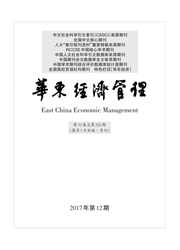

 中文摘要:
中文摘要:
基于碳配额与碳交易政策,建立分散决策下制造商主导的二级供应链碳减排Stackelberg博弈模型,采用逆向求解法求解,得出了最优减排率及最优定价。比较初始碳配额免费分配、定价出售和完全市场交易三种机制下分别实行总量控制和目标控制时的实际碳减排效果,并通过算例分析进行验证。研究表明:免费分配机制对供应链碳减排和市场需求的激励效果最佳;目标控制下,免费分配机制最优;总量控制下,减排成本系数大小将影响最优机制的选择。
 英文摘要:
英文摘要:
Based on carbon quota and carbon trading policy, this paper constructed the Stackelberg game model of two-echelon supply chain under decentralized decision making, used inverse solution method to solve the problem, and finally obtained the manufacturer's optimal reduction rate and the retailer's optimal price. Then it compared the actual effect of carbon emissions reduction under target control and cap control when implementing free allocation mechanism, fixed-price selling mechanism and full market trading mecha- nism respectively, and applied a numerical analysis to verify the results. The research shows that: The carbon emission reduction rate and demand of low-carbon products were the biggest under free allocation mechanism; Under target control, the free allocation mecha- nism was optimal ; Under cap control, the cost coefficient of carbon emission reduction would influence the option of the optimal mecha- nlsm.
 同期刊论文项目
同期刊论文项目
 同项目期刊论文
同项目期刊论文
 期刊信息
期刊信息
